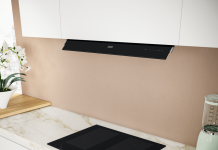 The Covid emergency has further highlighted the opportunities provided by 3D printing, which in 2020 helped fight the Coronavirus: its potential for the rapid production of components was in fact exploited in order to quickly produce personal protective equipment and medical equipment (for example the 3D printed nasal swab). But additive technologies represent an opportunity not only for the medical field. Markus Glasser, EMEA Senior Vice President at EOS (technology provider for industrial 3D printing of metals and polymers), illustrates the benefits deriving from the lessons learned last year. “AM technology increases the flexibility of the manufacturing processes, reducing both our dependence on global supply chains and logistics costs – says Glasser -. In times of uncertainty, when manufacturers are under increasing pressure to provide essential products and services, the fact that 3D printing can orient itself when and where it is needed most is hugely beneficial. Although this is a relatively new technology, today it is used in a number of different ways to produce supply-relevant components, and it is estimated that the market size will reach $ 23.75 billion by 2027. Industrial 3D printing enables a demand-oriented production, streamlines the processes and strengthens the supply chain. The products can also be improved or created from scratch with regards to their complexity, functional integration or lightness of construction. The combination of industrial 3D printing with the digital manufacturing structures that connect the machines and the production control software systems in locations around the world ensures maximum transparency, thanks to the real-time reporting, flexibility and performance. This approach has many advantages, including greater transparency of the supply chains, products that are easily adapted to individual or regional tastes, and a reduced ecological footprint of the products. All these advantages are much more difficult to achieve with a centralized and ‘traditional’ production system. Although, for obvious reasons, in 2020 we have seen many noteworthy examples of 3D printing in the medical field, this technology is by no means limited to that field, as evidenced by the spread of AM in all sectors, from aerospace to mobility, to consumer goods. This technology will not replace the entire production landscape of today, but it integrates it where developments would otherwise go astray”. As regards to the consumer goods sector in particular, the combination of customization, distributed manufacturing and on-demand manufacturing allows companies to vary the products according to the local demand and to produce them only when needed. This increases the flexibility and reduces the cost for storage and transport.
The Covid emergency has further highlighted the opportunities provided by 3D printing, which in 2020 helped fight the Coronavirus: its potential for the rapid production of components was in fact exploited in order to quickly produce personal protective equipment and medical equipment (for example the 3D printed nasal swab). But additive technologies represent an opportunity not only for the medical field. Markus Glasser, EMEA Senior Vice President at EOS (technology provider for industrial 3D printing of metals and polymers), illustrates the benefits deriving from the lessons learned last year. “AM technology increases the flexibility of the manufacturing processes, reducing both our dependence on global supply chains and logistics costs – says Glasser -. In times of uncertainty, when manufacturers are under increasing pressure to provide essential products and services, the fact that 3D printing can orient itself when and where it is needed most is hugely beneficial. Although this is a relatively new technology, today it is used in a number of different ways to produce supply-relevant components, and it is estimated that the market size will reach $ 23.75 billion by 2027. Industrial 3D printing enables a demand-oriented production, streamlines the processes and strengthens the supply chain. The products can also be improved or created from scratch with regards to their complexity, functional integration or lightness of construction. The combination of industrial 3D printing with the digital manufacturing structures that connect the machines and the production control software systems in locations around the world ensures maximum transparency, thanks to the real-time reporting, flexibility and performance. This approach has many advantages, including greater transparency of the supply chains, products that are easily adapted to individual or regional tastes, and a reduced ecological footprint of the products. All these advantages are much more difficult to achieve with a centralized and ‘traditional’ production system. Although, for obvious reasons, in 2020 we have seen many noteworthy examples of 3D printing in the medical field, this technology is by no means limited to that field, as evidenced by the spread of AM in all sectors, from aerospace to mobility, to consumer goods. This technology will not replace the entire production landscape of today, but it integrates it where developments would otherwise go astray”. As regards to the consumer goods sector in particular, the combination of customization, distributed manufacturing and on-demand manufacturing allows companies to vary the products according to the local demand and to produce them only when needed. This increases the flexibility and reduces the cost for storage and transport.
Another key issue is sustainability, which is increasingly important for companies and end users in all sectors. “This is directly linked to the benefits of 3D printing and will play a major role in 2021 and beyond – Glasser explains -. Most of the current manufacturing techniques are restrictive, expensive and rather inefficient. At EOS, we are convinced that advanced manufacturing can overcome these limits thanks to its ability to produce locally and on demand, reduce waste compared to the conventional production and potentially reduce CO2 emissions by 5% by 2025. In the coming years, also the 3D printing materials will increasingly be produced from renewable sources. The EOS high-performance plastic polyamide 11 (PA 11), for example, is already made from 100% renewable castor beans”.
In addition, Glasser highlights the theme of the digital warehouse: “the pandemic has demonstrated the need for resilience of the supply chain, the need for digitalization of the production and the need for a flexible, distributed and more regional manufacturing process. As the product variety and complexity continue to increase, the activities related to the spare parts (today and in the future) will be impacted greatly. The increase in costs and in the supply chain complexity for planning, manufacturing, warehousing and delivery will require a shift from the physical parts to digital products and services. In this change, in relation to the additive manufacturing, I expect to see new business models emerge, driven by three key trends: digitalization of production; growing attention to after-sales, assistance and complexity; sustainable and efficient production on demand. AM meets these requirements perfectly and will play an increasingly important role in solving the imminent threats to the supply chain, such as the obsolescence of a single part, the systematic supply chain deficiencies and the high inventory costs”. According to Glasser, the opportunities offered by AM for the near future are relevant. “The world – he says -, almost forced to innovate due to Covid-19, has suddenly arrived in the scenario of the distributed production, which has long been discussed, but has not really happened. Now a change is on the way, and there is the potential for structural transformations – for the better, if the right things are done in the right places and the AM is used correctly. Industrial 3D printing and decentralized manufacturing can transform the way we design, create, distribute and repair the products on a large scale. It is both a short-term and long-term solution that not only provides immediate access to the critical supplies, on demand, but also offers enormous flexibility and faster delivery of goods as they are closer to the end user. Almost all industrial sectors can benefit from the resulting innovation, helping to create a more efficient and sustainable supply chain”. Finally, as regards to the prospects for additive manufacturing in Italy, Giancarlo Scianatico, Regional Manager for Italy at EOS, states that: “the last few months have certainly been useful for the Italian industrial system to understand the actual benefits in terms of productivity related to the additive manufacturing technologies. Several companies have already started various projects with EOS for the development of new applications in different production areas, and these elements will be the basis for a potential expansion of the entire 3D printing sector in Italy during 2021”.



